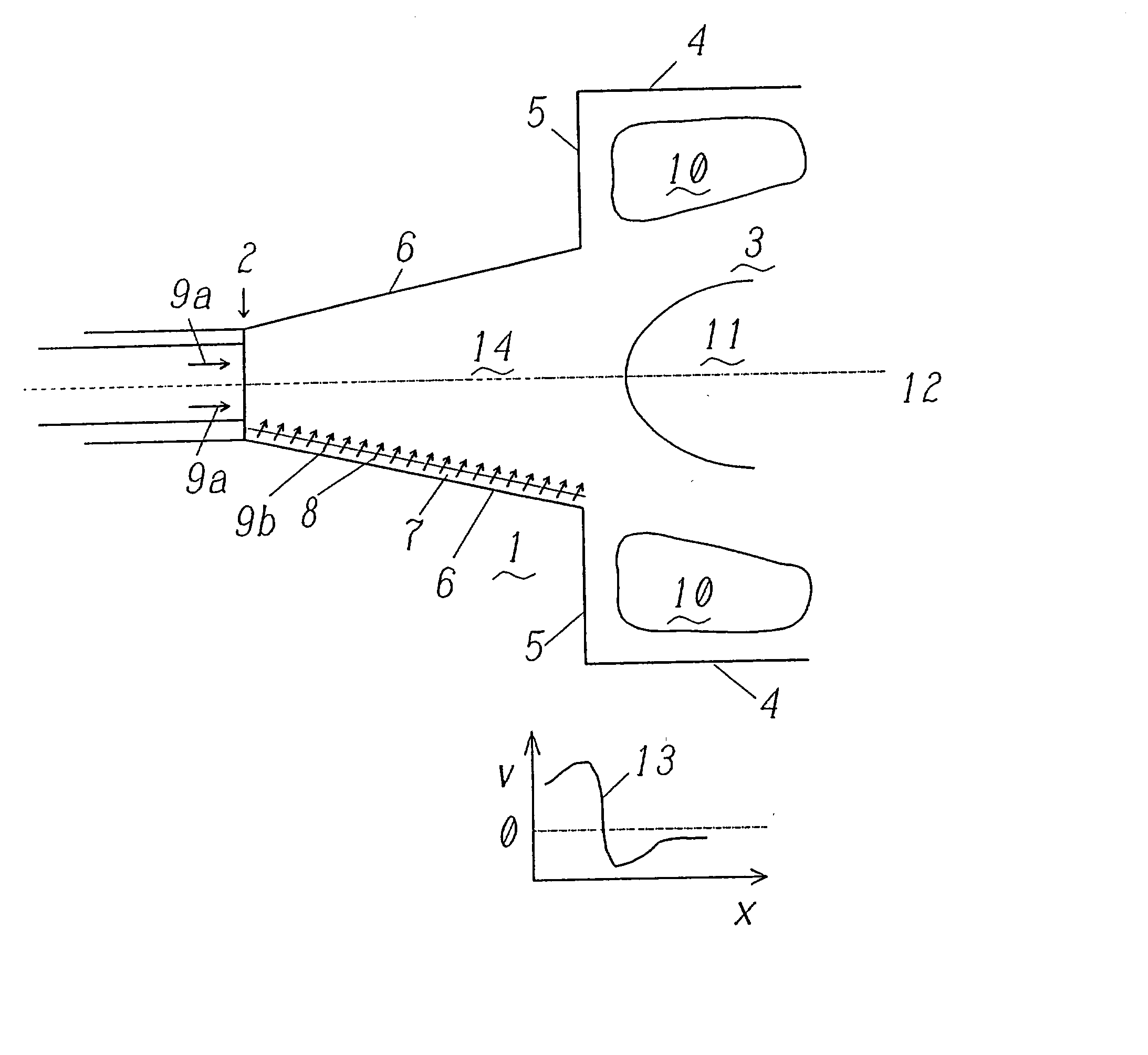Burner with exhaust gas recirculation
a burner and recirculation technology, applied in the direction of gaseous fuel burners, combustion types, lighting and heating apparatuses, etc., can solve the problems of diffuse-like combustion usually not being optimally carried out in terms of emissions, unstable flame, and complicated burner design for two different operating modes
- Summary
- Abstract
- Description
- Claims
- Application Information
AI Technical Summary
Benefits of technology
Problems solved by technology
Method used
Image
Examples
Embodiment Construction
[0027] FIG. 1 shows a double-cone burner 1, formed from two part-cone bodies 6, the axes of which are offset relative to one another in such a way that a slot 7 is formed between the part-cone bodies 6. Combustion air 9b flows tangentially through this slot 7 into the burner interior 14. Moreover, axial combustion air 9a is supplied to the burner interior 14 from the side of the burner tip 2 where the diameter of the burner is at a minimum. Fuel 8 is admixed with the tangential combustion air 9b, so that a conical swirling cone consisting of a fuel / air mixture is formed in the burner interior 14. In addition to the admixing of fuel near the slot 7 between the part-cone bodies 6, in particular, liquid fuel can also be supplied to the burner interior 14 axially, that is to say near the burner tip 2, via a central nozzle.
[0028] During the outflow of this cone into the combustion chamber 3, various backflow zones are formed at the same time. On one side, what are known as outer backflow...
PUM
 Login to View More
Login to View More Abstract
Description
Claims
Application Information
 Login to View More
Login to View More - R&D
- Intellectual Property
- Life Sciences
- Materials
- Tech Scout
- Unparalleled Data Quality
- Higher Quality Content
- 60% Fewer Hallucinations
Browse by: Latest US Patents, China's latest patents, Technical Efficacy Thesaurus, Application Domain, Technology Topic, Popular Technical Reports.
© 2025 PatSnap. All rights reserved.Legal|Privacy policy|Modern Slavery Act Transparency Statement|Sitemap|About US| Contact US: help@patsnap.com



